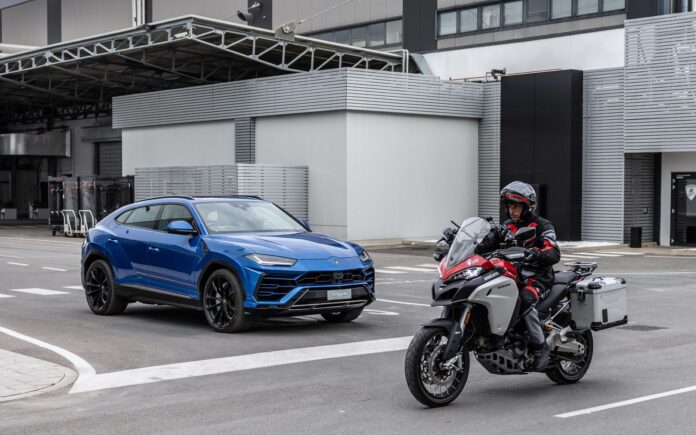In future, when autonomous vehicles are widely used, they will be ‘talking’ the each other and coordinating their movements on the road. The technologies to enable such communication (which can also include interacting with traffic control systems) already exist now and over the past decade, some carmakers have been including them in their R&D projects.
Motorcycle manufacturers, whose products also share the roads with other vehicles, also see much importance in the Vehicle-to-Vehicle (V2V) technologies. Leading motorcycle manufacturers have formed the Connected Motorcycle Consortium (CMC) as an international association that aims to include motorcycles in the future of connected mobility to improve the safety of motorcyclists.
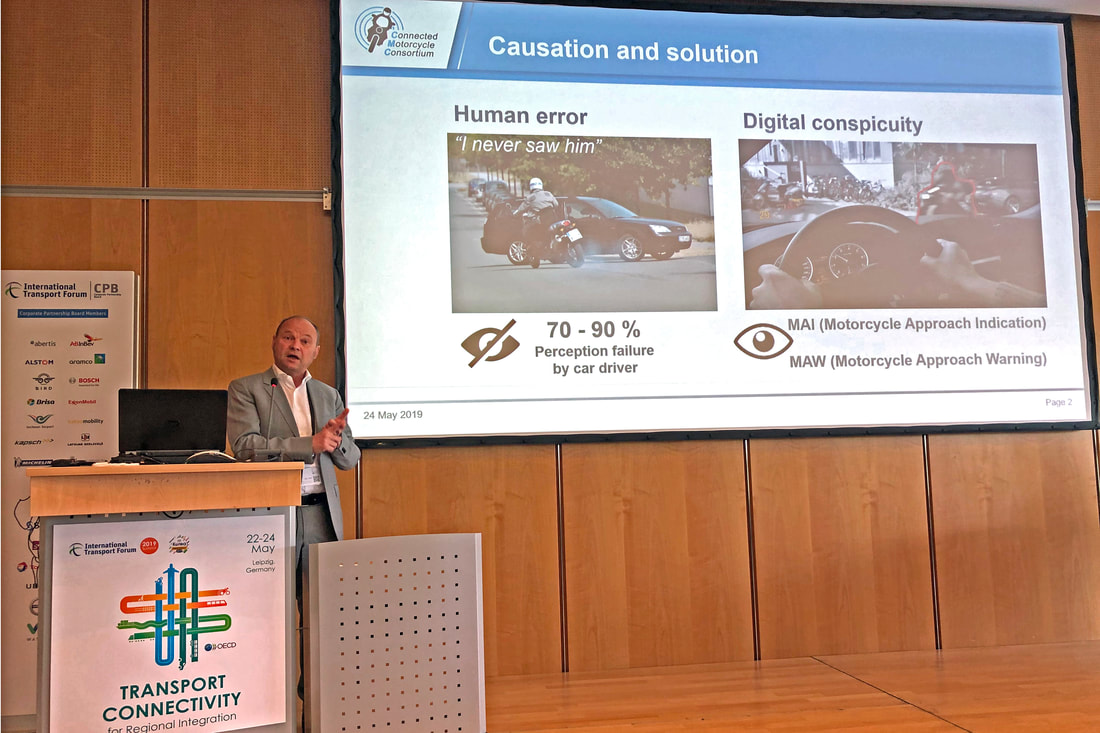
CMC, founded in 2016, has been working on also adding information sent by motorcycles (which have different needs and dynamics) so that this can be standardized in the future when the technology is integrated into the entire motorcycle and car fleet in circulation.
CMC’s work initially involved in an accurate analysis of the most dangerous accidents between motorcycles and cars in terms of frequency and the seriousness of the harm suffered by motorcyclists.
With this investigation as a starting point, the cases where connectivity could help the most were selected, and development of those methodologies capable of reducing the number of impacts and their risk to the health of motorcyclists was initiated. A crucial aspect of this research was to reduce the system reaction times as much as possible, because limiting the risk of an accident depends on how far in advance one of the two parties involved is warned.
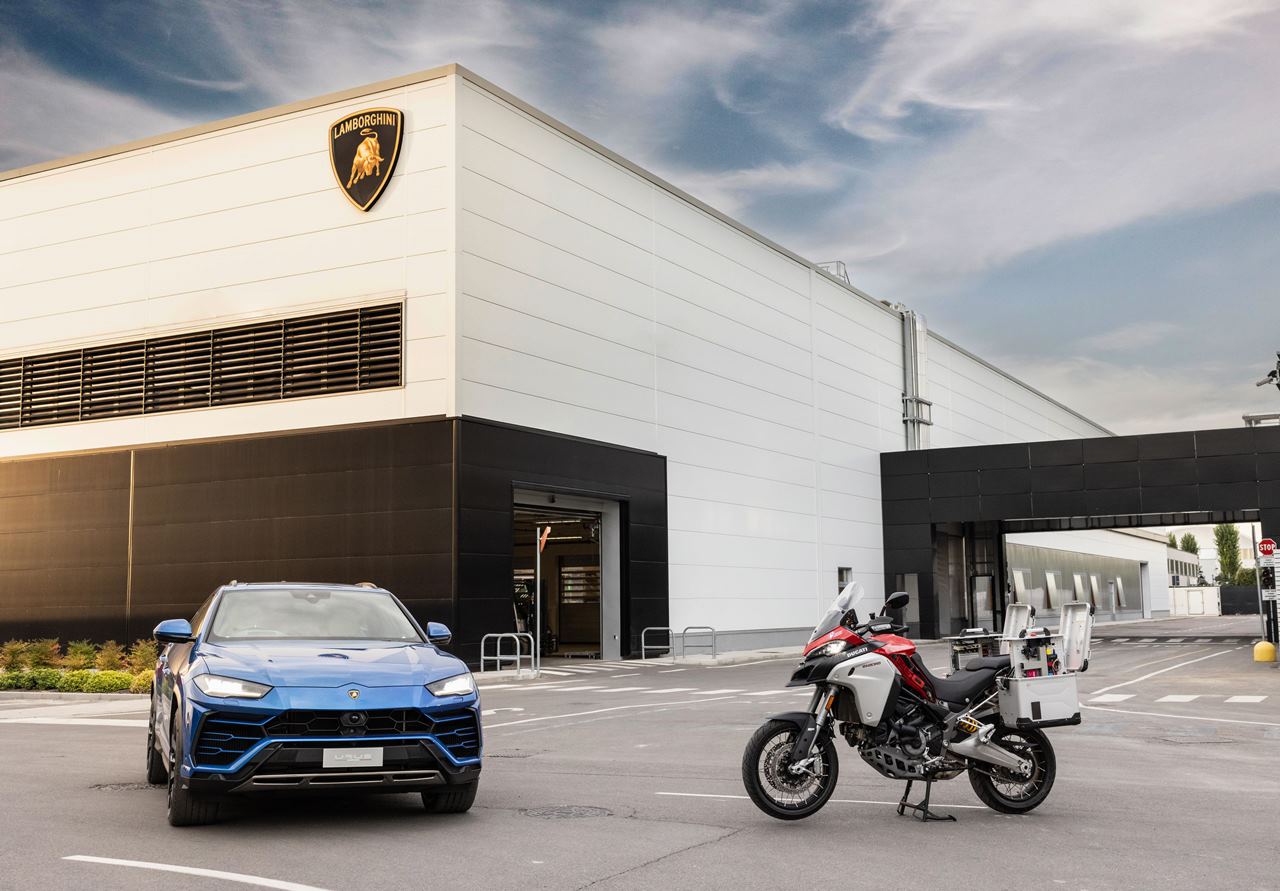
The research has contributed to communication systems being developed and progress in this was recently demonstrated by Ducati, in collaboration with Lamborghini at an event held at the Lausitzring racetrack in Germany. The event, organised by CMC, had live demonstrations of C-ITS and Advanced Driver Assistance Systems (ADAS) and technologies.
Lamborghini has been helping Ducati in the trial stage of the project by providing an Urus for use case simulations. Ducati decided to look at the three most critical and dangerous accident cases, ie those that place motorcycles in an obscured position in relation to oncoming cars or those that put motorcyclists in a situation where they don’t have visibility of what is happening in front of them. In these situations, communication between vehicles integrated with on-board sensors could help reduce the number of accidents.
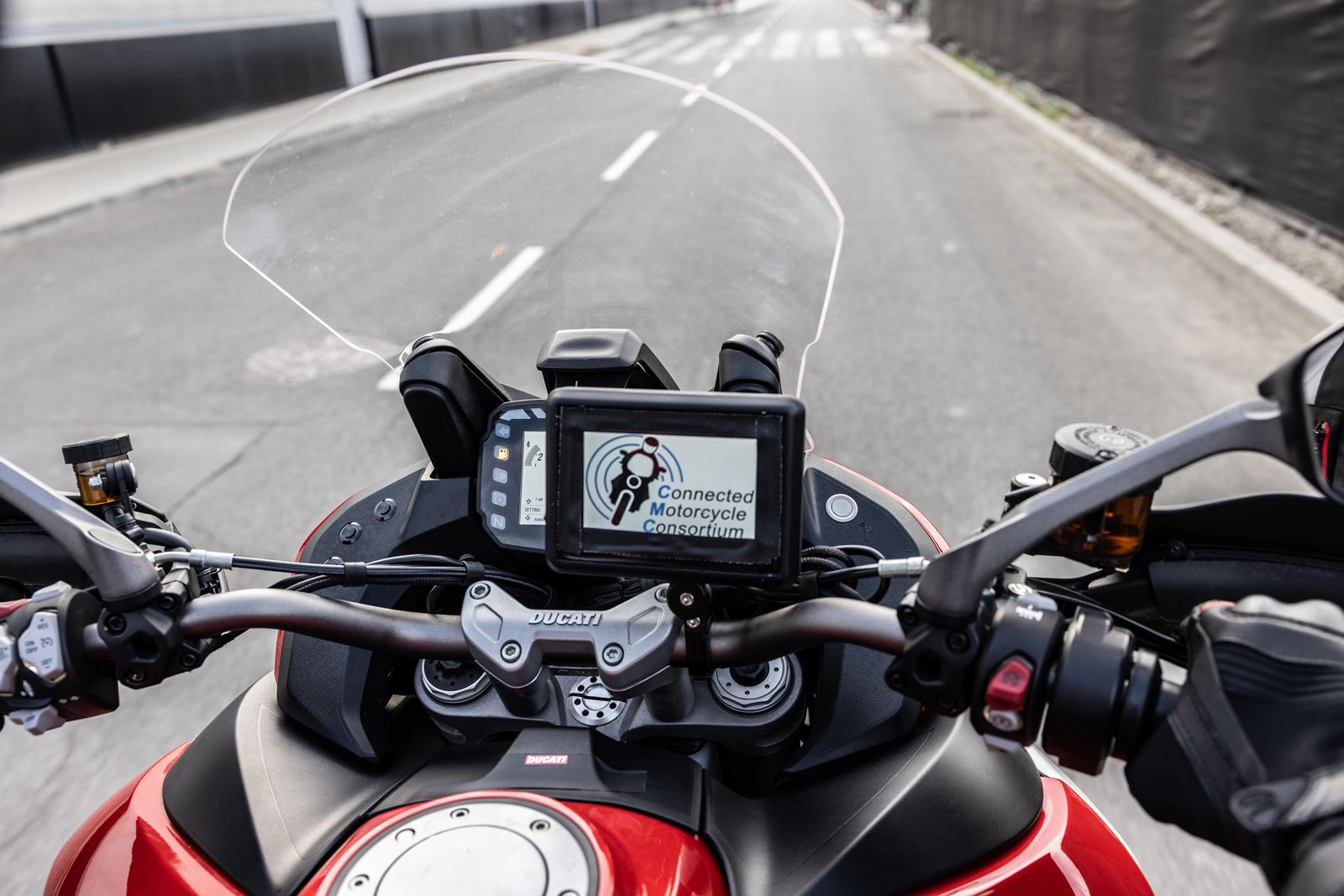
The technologies were developed by Ducati in collaboration with a number of suppliers. In this development phase, the prototype has an additional screen on the motorcycle showing warning signals that can let the motorcyclist know about any danger.
The cases analyzed and demonstrated at the Lausitzring were IMA (Intersection Movement Assist), LTA (Left Turn Assist) and DNPW (Do Not Pass Warning). In the case of IMA, the scenario is where a motorcyclist on a busy road approaches an intersection with reduced visibility. A car is also arriving at the same time from a secondary road.
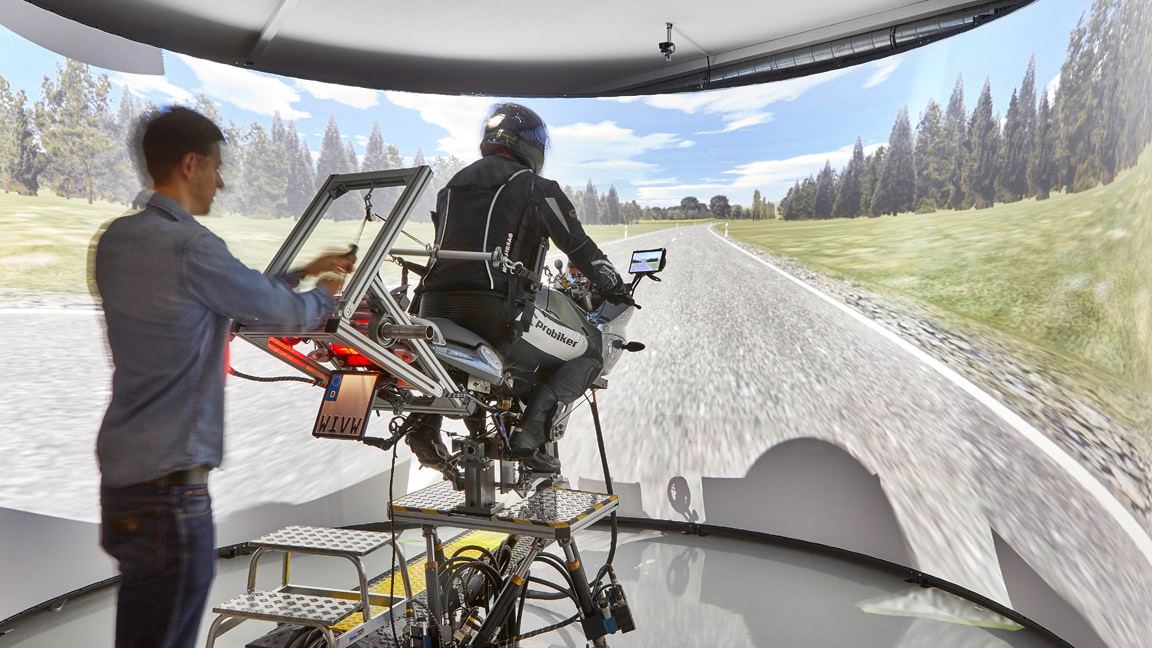
To make this situation even more critical, Ducati opted to add a fixed obstacle to totally obscure the view of the motorcycle from both the car driver and the car’s auxiliary systems. In this case, a warning signal is displayed on the car dashboard alerting the motorist to the arrival of the motorcycle, advising the driver to approach the intersection with extreme caution.
LTA (which is based on driving on the right side of the road), on the other hand, relates to an intersection where both the car and motorcycle are traveling on the main road but in opposite directions, and the car wants to turn left.
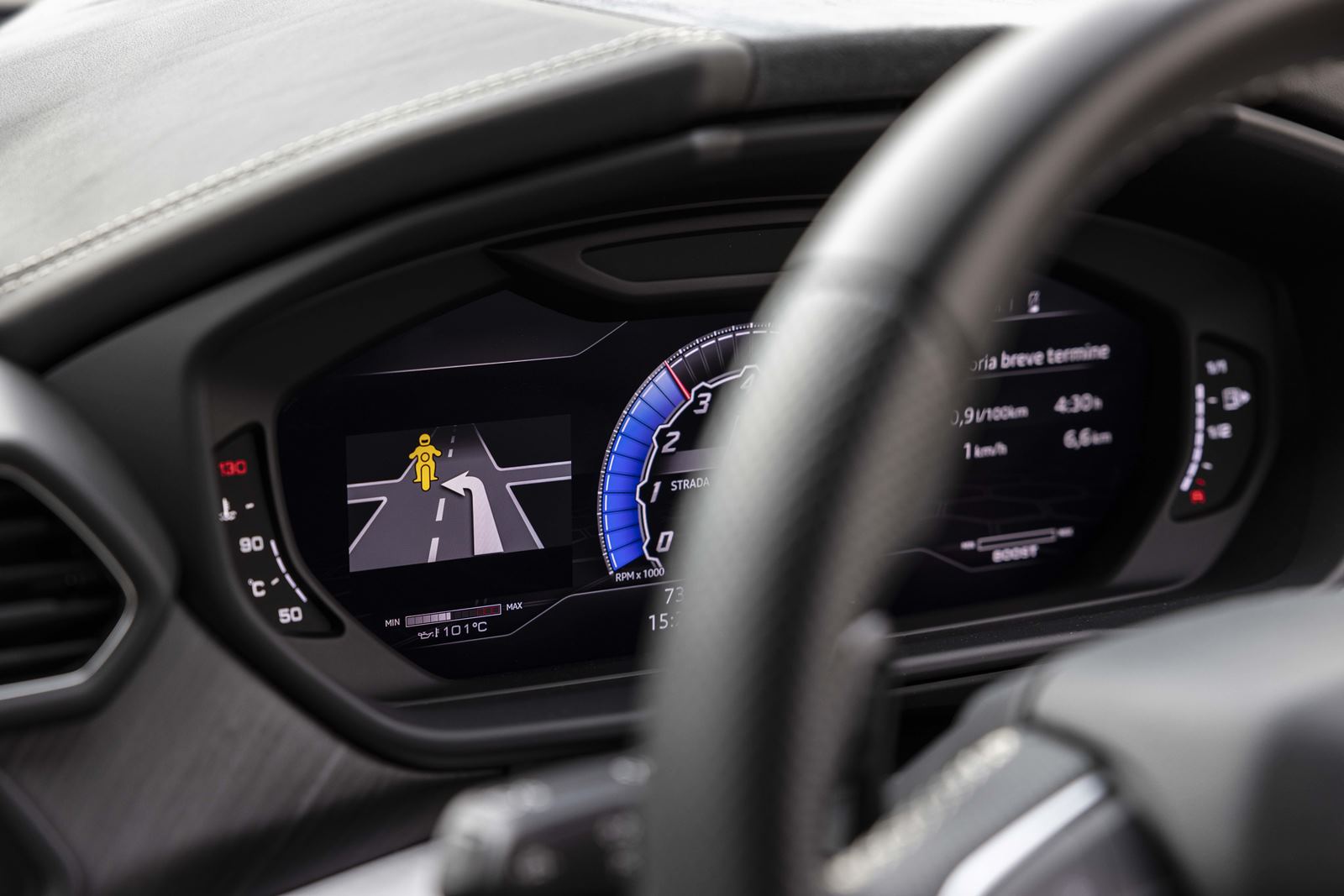
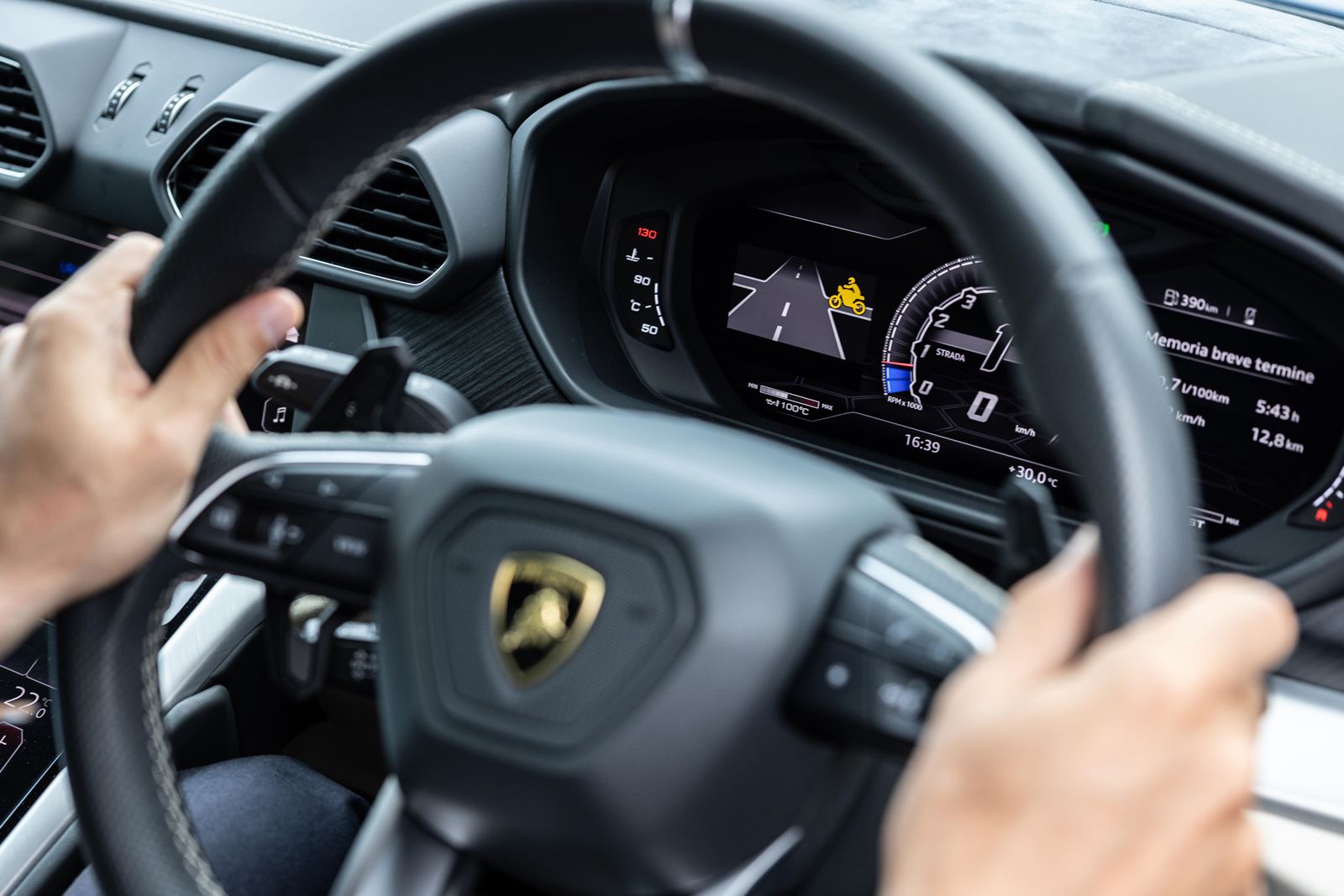
In this case, the motorcycle is less visible than the car, even through the auxiliary systems, with the risk of not being well evaluated by the oncoming motorist. Again, in this case, as soon as the motorist turns on the signal indicators when approaching the intersection, a warning signal for the motorcycle will be displayed.
DNPW, meanwhile, is the case where a motorcycle in a line of traffic wants to overtake a large vehicle in front of it and which in turn has a car ahead of it that wants to make a left turn but is not visible to the motorcyclist. In this case, it is the motorcyclist that sees the warning as soon as the system detects that both the car and the motorcycle have turned on their signals.
From the video, it can be seen that the V2V technology works well and can certainly prevent accidents. Further testing will be carried out to validate its effectiveness and reliability and perhaps on day, it will be installed in cars and motorcycles as a standard safety feature.
